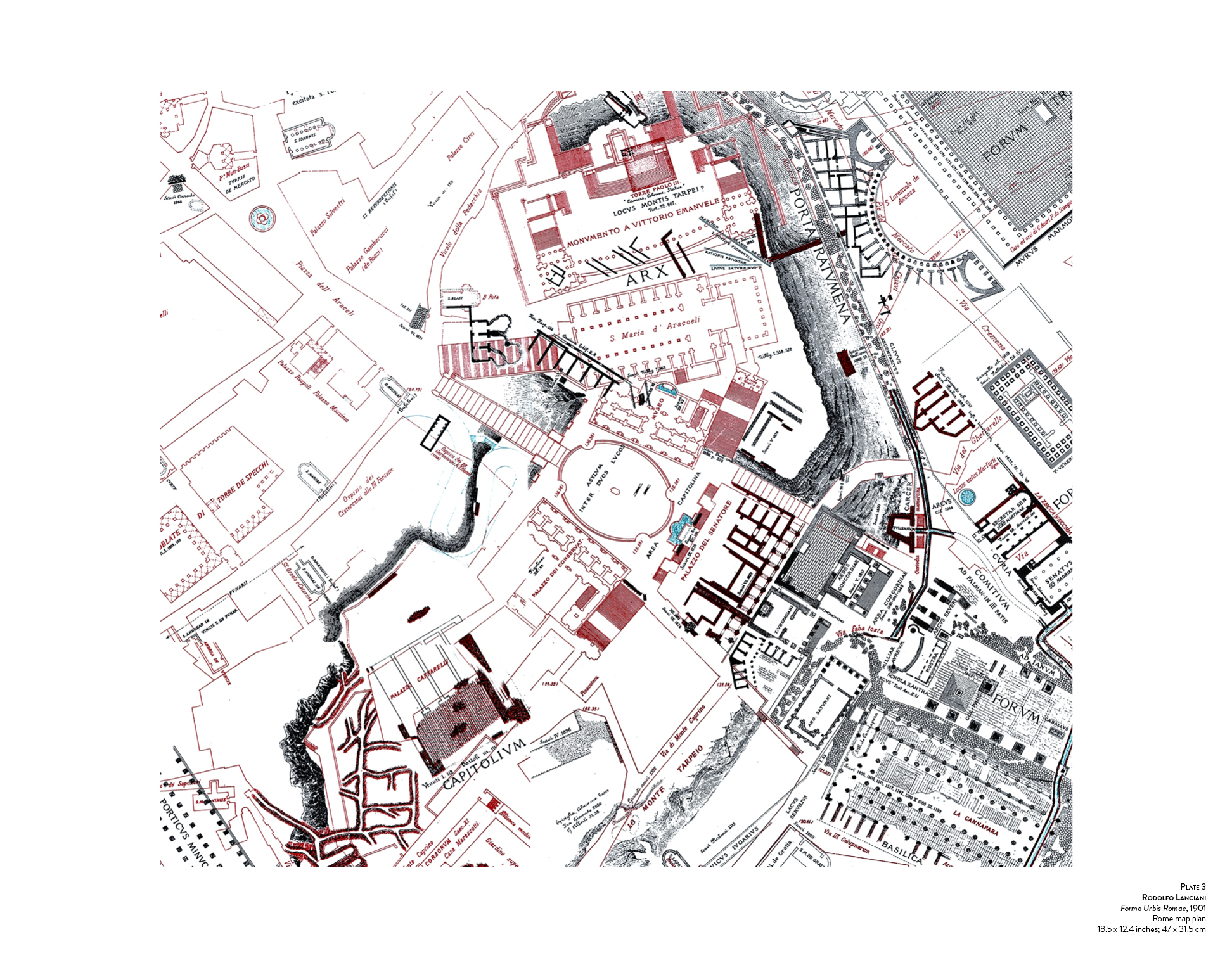Efficacy of Perspective: the Production of Public Space in the 21st Century
Syracuse University | Thesis
Project: Thesis Project
Advisor: Anne Munly
Dean’s Citation for Excellence in Thesis Design Award
Thesis SuperJury Award & Exhibition
Ralph T. Walker Travel Grant Recipient
This thesis reconsiders perspective as a means to explore ‘transitory experience’ in 21st century urban space.
Considering the images created by Giovanni Battista Piranesi in the 18th, Baron Haussmann¹ and Camillo Sitte in the 19th, and Gordon Cullen in the 20th century - wherein each developed a thesis of public space conceived through the creation of perspectival views - this thesis contends that all four architects anticipated a condition of transitoriness:
- PIRANESI’s intoxicating images overwhelm our senses, through his devices of scalar distortions, scenographic techniques, layering and framing.
- HAUSSMANN, the butcher, decimated medieval Paris in pursuit of an architecture of axial relations, allowing the possibility of the flaneur.
- SITTE sought out the episodic urban rooms, toward the medieval fabric of European cities.
- CULLEN advocated the slow progression of a pedestrian, calling it ‘Serial Vision’.
In Architecture and Modernity, Hilde HEYNEN defines transitoriness as a ‘radical opposition’ between the insights and ideas of the past and present² , acknowledging the need for a reconciliation between the various layers within the city. Meanwhile in Production of Space, Henri LEFEBVRE writes that architectural discourse had become “formalist […] a language of aesthetics divorced from ethics, experience and the body,”³ where it is strongly applicable in public spaces that have not yet been revisited for a while. The public engagement and intended use of the plaza have been bifurcated.
Therefore, transitoriness is the word I would like to describe as a compilation of the following three:
- Mediation within the layers of the city.
- Movement from the point of view of the eye.
- Recuperation of the experiential and popular usage.
I have incorporated in my lexicon ways to stretch, extend, overlay, and undercut in perspectives, where they function as a device to produce distortions, omissions, accentuations, etc. It is an investigation of the methods deployed, and terms used, by these four historic figures. These propositions are both represented in, and constituted by, this set of architectural perspectives - each of which is intended to act as a provocateur - hinting at the possibility of an architecture in transition.
By implementing the lexicon through the creation of a series of images referred to above, this thesis proposes a manifesto to recuperate the “experience and the body” and mediate the temporal trajectories in the 21st century urban space.
_____________________________
¹ Gustave Caillebotte, Paris Street; Rainy Day, 1877, Art Institute of Chicago, Chicago.
² Hilde Heynen. Architecture and Modernity: A Critique (Cambridge: MIT Press, 1999), 12.
³ Henri Lefebvre, The Production of Space (Oxford: Wiley-Blackwell, 1991), 65.

Part 1.1: MANUAL













Part 2.1: ROME

























Part 2.2: PARIS





















